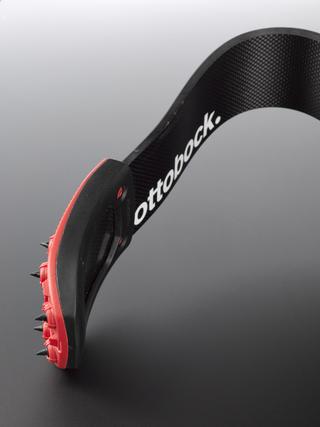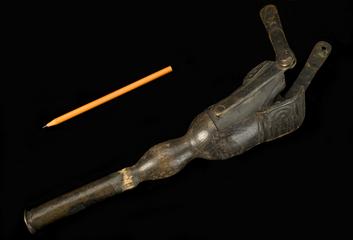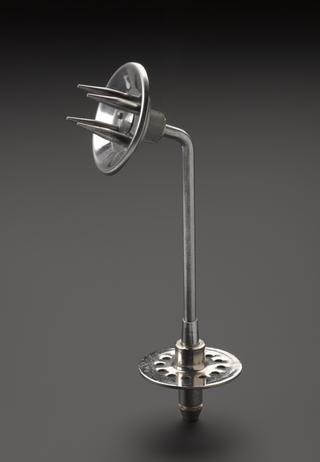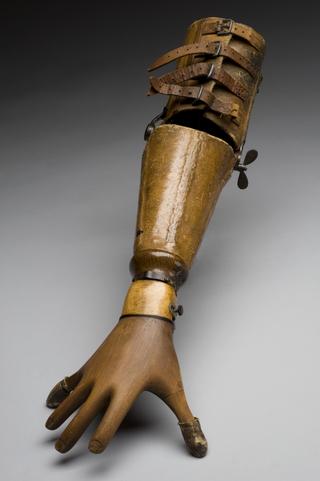
Prosthetic/artificial limbs used by Tracey Baynam
- Made:
- 1967 in United Kingdom
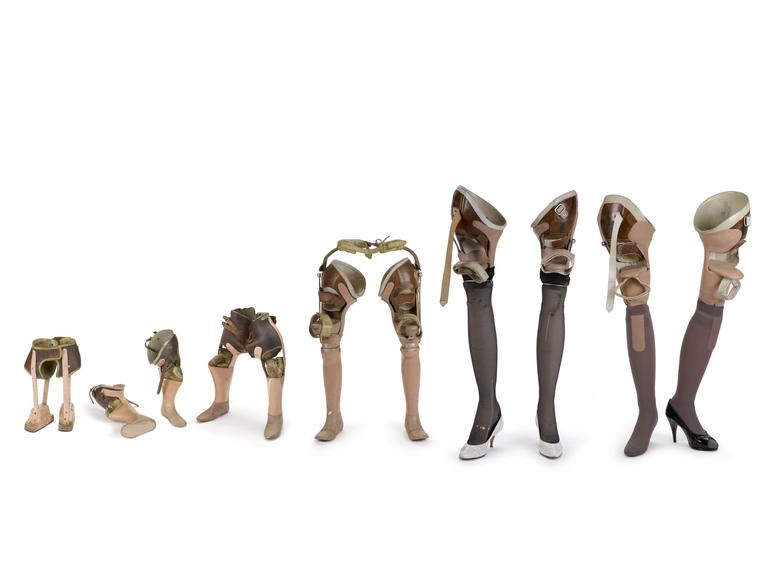
Pair of prosthetic/artificial limbs made for Tracey Baynam, aged 4 years, living with impairments caused by the compound thalidomide, made by J E Hanger, United Kingdom, March 1967
“The trouble was they were like an old comfy pair of shoes. By the time you’d got used to them and they were all comfortable you were too big for them and you’d got to have another pair.” Tracey Baynam, talking as part of the Thalidomide Society’s oral history project
Many children living with limb difference caused by thalidomide eventually rejected prosthetic or artificial limbs. For Tracey though,
“I wanted to [wear the limbs] because I was trying to be normal and a normal person wasn’t in a wheelchair, a normal person was standing upright”
For each pair of artificial limbs, she had four or five sessions with her fitter, Fred Rose, accompanied by her mum when she was younger. The first task was to make plaster casts of her lower body for the limbs to be altered to fit her body shape. Over the course of the sessions, tweaks and adaptations would be made. However, they were still heavy and could be difficult to move.
“They were never comfortable even the best pair Fred ever made me in the world were never comfortable.”
As she grew up, she persuaded her limb fitter Fred to make a set of prosthetics to accommodate four-inch stilettos, which he did in his spare time. After years of walking with sticks to help her balance on her artificial limbs, Tracey developed osteoporosis in her shoulders. She had also married and had an active young family and decided to use a wheelchair. Occasionally she still wore her prosthetic/artificial limbs while using her wheelchair, in her words to ‘appear normal.’ After a while though the prosthetics “hung around into the bedroom for ages and ages. Then they just got moved to the loft… It wasn’t done lightly… I needed to put them out of sight so that I’m not tempted because they hurt my shoulders.” After appearing on BBC programme, ‘Call the Midwife’, Tracey donated her artifical egs to the Science Museum.
Thalidomide was a compound found in drugs prescribed to people in the late 1950s and early 1960s. Although today it is associated primarily as a treatment for pregnancy related nausea, it was also prescribed to anyone experiencing symptoms of colds, flu, headaches, anxiety, and insomnia. Thalidomide causes nerve damage in the hands and feet of adults, but when taken in early pregnancy it causes impairments such as limb difference, sight loss, hearing loss, facial paralysis, and impact to internal organs. One tablet is enough to cause significant impairments. Researchers later identified that there was a link between the impairment a person is living with, and which day of the pregnancy thalidomide was taken. UK distributors withdrew the drug in 1961 and a government warning was issued in May 1962.
Details
- Category:
- Orthopaedics
- Object Number:
- 2017-78
- Measurements:
-
overall: 510 mm x 270 mm x 175 mm,
- type:
- artificial leg and prosthetic leg
- copyright:
- Unknown Copyright holder
- credit:
- The Thalidomide Society
